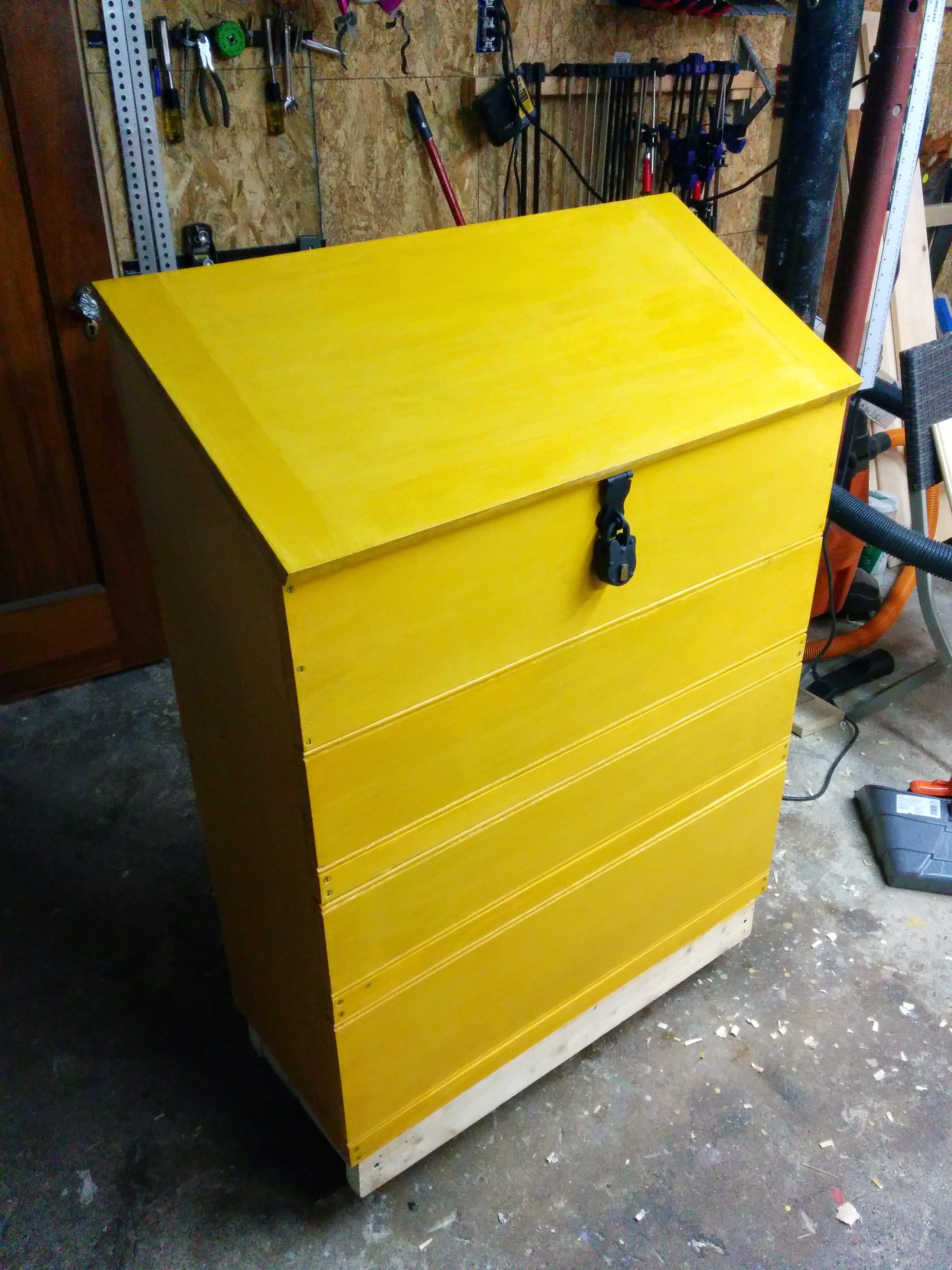Dutch Tool Chest - Part 3
Glue all the things!

At this point, the dovetails were cut, the shelves were flat, the dados were routed, and I was ready to start the glue up. On this chest, there are 8 glued joints. The most important are the bottom two with the dovetails. Gluing up dovetails isn’t really tricky. In this case, I failed to think about clamping before I started the glue up. I have a lot of clamps, but only two of them open their jaws up wide enough to swallow this tool chest. So I had to find some tricks.
Dutch Tool Chest - Part 2
Dovetails and dados!

One of the important things I learned from my first tool chest was to make sure that the sides aren’t cupped. This should be obvious, but it can sometimes be the difference between flattening before or after the board is cut to length. This chest’s sides were flattened after they were cut to length, and the result is much nicer.
Dutch Tool Chest - Part 1
This chest will be different.

Every project begins with sawing your first board. This project is no different. I measured the height that I wanted and then drew a line across the board. I then measured 3 inches up and 3 inches down and drew a line making the angle for the top. After cutting the two resulting boards to length, I had the sides of my tool chest.
Core Tools - The Jack Plane

If you are going to have just one plane, you should have a jack plane. It can do the job of the other planes. It is most commonly used to thickness and flatten boards, but it can also joint and smooth boards.
The Modern Joiner
Joinery and cabinet making was once one of the most important professions on the planet, but today it is nearly a lost art. In the early 20th century in the US and in the mid 20th century in Europe, people stopped buying furniture made by hand, and the joiners were replaced by people working in factories. Joinery was replaced by techniques that lend themselves to quick mass production. This has had two obvious impacts on modern furniture. It is cheaper and less durable. The low prices in some ways make up for the lack of quality, because when it breaks we can simply buy a new one. This unsustainable cycle has infested many other aspects of our lives.